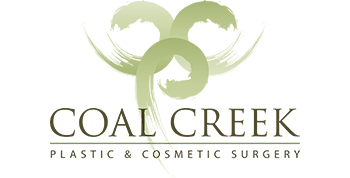Why Cost Shouldn’t Be the First Question You Ask
One of the most common questions regarding breast augmentation surgery is “how much does it cost?” When you are looking to make a costly purchase of any kind, the cost is certainly an important factor to consider, but when your health and medical results are at stake, it shouldn’t be the only one. In fact, it should be down the list, below patient safety and the quality of the results. Cheap surgery can end up being the most expensive procedure of all.
Patient Safety
Breast augmentation is real surgery, and although the complication rates are low, they are much higher in the hands of someone who isn’t well-trained or who cuts corners by operating in an unaccredited facility.
Start by confirming that your surgeon is board-certified, not by just any board, but by the American Board of Plastic Surgery. This indicates that the surgeon has gone through rigorous training, extensive examination and maintenance of expertise. This training takes years, and maintaining expertise requires time, so a cost-cutting shortcut is to skip all that training and testing and to just take a weekend course. To figure this out, simply look up the surgeon you are considering on the American Society of Plastic Surgeons (ASPS) website. All members of ASPS are certified by the American Board of Plastic Surgery and are in good standing.
Where your surgery is performed is as important as who is performing the surgery. Confirm that your surgeon operates in an accredited operating room. Qualified accrediting/certifying agencies include The Joint Commission (TJC), AAAASF, AAAHC, IMQ, Medicare and the state your surgeon practices in. The Joint Commission certification is the most rigorous, along with Medicare. These agencies regularly check the facilities they accredit or certify for multiple safety features, including the physical facility, staffing, policies and procedures, emergency protocols and much more. Safety is expensive, so a great way for a surgeon to be able to offer a lower price is to cut corners on patient safety.
Local vs General Anesthesia?
Breast Augmentation surgery can be safely performed under General Anesthesia or a Heavy Sedation (as long as the surgeon understands the elegant process of anesthetizing the breasts with Local Anesthesia in conjunction with the Heavy Sedation). Both Processes are mainstream anesthesia choices. General Anesthesia carries a higher risk of aspiration and pneumonia, as well as deep vein thrombosis and pulmonary embolism. The heavy sedation process keeps the patient in a physiological state closer to normal, however careful heart, blood pressure and oxygen monitoring is important for both forms of anesthesia.
If you have questions or concerns, please be sure to discuss with your board-certified plastic surgeon.
What do other patients say?
Now that you’ve found a well-trained surgeon who doesn’t cut corners on safety, you still have more homework to do. How do you know if the surgeon is going to listen to your goals, if you’ll receive the care you deserve and how happy most patients are with their results? Although online reviews aren’t perfect, it is nonetheless worthwhile to check them out. Keep in mind that negative reviews may be legitimate, but they might have been posted by a jealous competitor, a disgruntled former employee or a patient with problems that aren’t actually related to the surgery.
On the other hand, a string of raving five-star reviews might have been posted by the surgeon’s own office staff. Look for similar wording and sentence structure as a clue that one person posted multiple reviews. If you find completely different review lengths and writing styles, the reviews are likely to be legitimate. In addition, if a surgeon has a score that’s high, but less than five, that is also a good sign that the reviews are legitimate. No one can truly please everyone.
What about the results?
Most plastic surgeons post before-and-after photos in a photo gallery on their website. When looking at the photos, look for consistency between the before photo and the after photo. The lighting, background, camera distance from the patient should all be close to the same. Look for a frontal view and a side view. If you see only a three-quarters view on all photos, there may be a reason; it is easier to hide surgical differences in the left and the right when the patient is partially rotated away from the camera. For patient confidentiality reasons, not all surgeons post copious photos to the public on websites, which is ok. Talk to your surgeon’s staff, to see where these surgical photos are available for viewing. Often the office will invite you to come to the office to review the photos that are under the protection of the office itself. This will be an opportunity for you to review photos directly with the surgeon.
Another thing to look at is the natural mismatch in breasts. No breasts are the same. If there are differences in the left and the right, is it because the patients’ breasts are different? Or is it because one implant was placed higher or lower than the other?
If you choose a surgeon who isn’t expertly trained or doesn’t get great results, if you return for free or low-cost revision, do you think you’ll get the result you want? Probably not. If you go to an expert to revise your breast augmentation, the cost will likely be higher (sometimes significantly so) than the cost of an initial breast augmentation. It is usually much more difficult to fix a poorly done breast augmentation than it is to do the first augmentation right.
Please realize that there are inherent risks as well as benefits from breast augmentation. It is important to review such risks and benefits with your surgeon. Even with all expertly performed surgeries, not all surgeries heal as anticipated, due to the busy lives we all live. Therefore no surgeon can promise perfection. However, it is prudent to find a quality surgeon with excellent technique and artistry, who operates in a quality facility, who has quality office staff, and has quality reviews.
Contact the Office
After you’ve narrowed down your selection to one or two plastic surgeons, now it is time to call the office directly to ask questions.
When calling the office, note how the staff answers the phone. You may be transferred to a patient coordinator (PC), who should be well-trained to answer questions, including a range of fees. Not all breast augmentations are straight forward. Depending on the shape and tone of your breasts, it’s possible that the surgeon may recommend a lift on one or both sides or some other additional procedure. The PC will try to give you an idea of the range of costs so that you are prepared. Financing options are also something you can discuss with the PC.
Your Consultation
Look at the big picture. Does the surgeon listen to you and discuss your goals? Do you feel confident that you would get the best care? Though a complication is unlikely, it can happen with any surgery. Is this the surgeon who would respond in the middle of the night or on a weekend?
Choosing your Surgeon
Think into the future. If you go to the best surgeon, how are you going to feel? How likely is it you’ll achieve your goal? Now, imagine going to the cheapest surgeon. How would you feel if the results aren’t so great?
If you prioritize your safety, good results and quality of care above price, it’s likely that you will connect with the best plastic surgery office for you.
When choosing a plastic surgeon, be sure to check out the ASPS Find a Plastic Surgeon tool to find an ASPS member surgeon in your area.
Original article from American Society of Plastic Surgeons is available here.To schedule a breast augmentation consultation please contact us.



